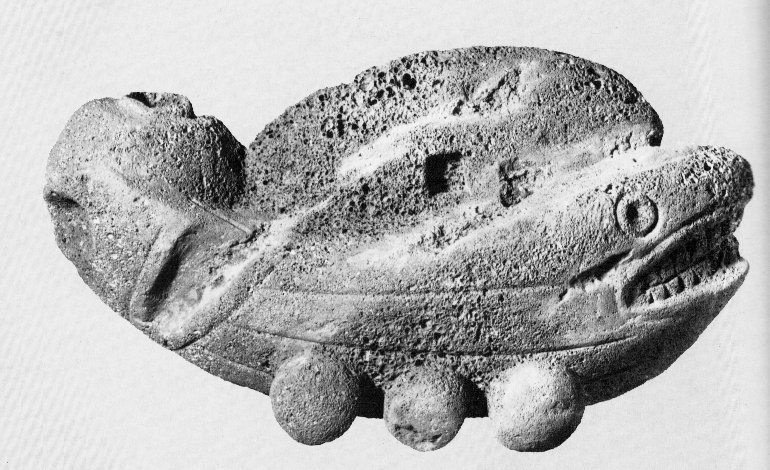5. The 'residences' of Hotua Matua, the sun king on Easter Island (even if he was a real historical person his characteristics and deeds became like that of the sun, hiding his true person), presumably were connected with his wife, queen Vakai, who over time became a moon queen. Sun forms a pair with the moon. Ships are female according to ancient tradition, and so are houses, I suggest. Vakai is a name which begins with vaka = canoe. An instructive stone sculpture (designed to be a myth map) has a hare paega on the back of what probably is sun as a fish:
The front of the fish is the male sun, while the back is its female part. Gods can be both male and female and change sex according to the location in the cycle. Working with cloth and making white tapa was the business of women, and one of them, Hina, was dispatched of to the moon because she disturbed the gods by her beating tapa. Ships, houses, the back side, darkness, moon, birth, death - and cloth were female. The hau tea glyph must therefore be female - given the name of the glyph. Tea means white and the moon is white. |
